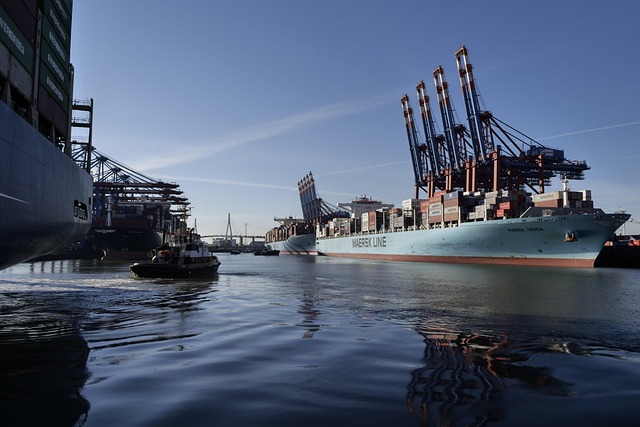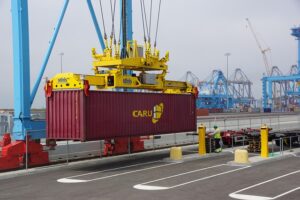When buying a shipping container (for sale), start by defining your purpose (storage/transport) and specific requirements, like size (20ft, 40ft, high cube) and condition (new or used). Research reputable sellers, compare pricing, and consider industry standards like ISO compliance. Strategically place and utilize your container post-purchase – from home offices to event spaces – maximizing its value while ensuring quality and safety within your budget.
Looking to invest in a shipping container? You’ve come to the right place. In today’s market, buying a shipping container is a smart move, offering both flexibility and affordability. This comprehensive guide breaks down everything you need to know before purchasing your own unit. From understanding the market dynamics to navigating the sales process and delivery logistics, we’ll walk you through each step. Plus, discover innovative ways to maximize your investment with practical placement ideas for this versatile asset.
- Understanding the Shipping Container Market: What to Consider Before Buying
- The Process of Selling and Delivering a Shipping Container: Services and Logistics
- Maximizing Your Investment: Ideas for Using and Placing Your New Shipping Container
Understanding the Shipping Container Market: What to Consider Before Buying

When considering a shipping container purchase, whether it’s your first time or you’re expanding your fleet, there are several factors to take into account. The shipping container market offers a wide array of options, from new and modern containers to used and refurbished ones, catering to diverse needs and budgets. Understanding these variations is crucial before making a decision.
First, determine your specific requirements, such as the purpose of the container (storage, transportation, or both), the type of cargo you’ll be handling (general goods, perishable, hazardous materials, etc.), and the geographical conditions where it will be used. This will help narrow down your choices. You might opt for a standard size container, like the popular 20-foot or 40-foot options, or consider specialized containers such as high cubes, insulated, refrigerated, or flat rack ones, depending on your cargo needs. Additionally, inspect the container’s condition and quality—whether it’s new, used, certified, or refurbished—ensuring it meets industry standards like ISO compliance. Buying directly from a port or supplier can offer discounted rates and ensure you get a genuine, industrial-grade shipping container that is secure, weatherproof, and stackable for efficient storage and transportation.
The Process of Selling and Delivering a Shipping Container: Services and Logistics

When a shipping container is for sale, the process involves several key steps to ensure a seamless transaction and efficient delivery. Firstly, potential buyers can search for available containers through various online platforms or local dealers, filtering options based on their specific needs, such as whether they require a used or new shipping container is for sale. Once a suitable option is selected, the buyer can contact the seller directly, who often provides detailed information about the container’s condition and specifications. For instance, buyers might be interested in knowing if the shipping container is for sale cheap, refurbished, or certified, ensuring it meets their budget and quality standards.
After agreeing on terms, the logistics of delivery and placement come into play. The seller may offer shipping container delivery services, including one-trip deliveries, where the container is transported directly from the port to the buyer’s location. For buyers seeking a more flexible option, the seller might provide services for stacking, securing, or even customising the container to suit specific requirements. Some dealers specialise in modular and portable containers, catering to customers who need to move their units frequently. Regardless of the chosen service, efficient coordination is essential, especially when dealing with perishable goods in insulated or refrigerated shipping containers. This ensures that the buyer receives a high-quality product that meets industry standards, making the entire process a successful experience for all parties involved.
Maximizing Your Investment: Ideas for Using and Placing Your New Shipping Container

Maximizing your investment in a shipping container starts with strategic placement and innovative use ideas. If you’ve purchased a new shipping container, consider its versatile nature and customizable features. You can transform it into a home office, a storage unit, or even a pop-up event space – the possibilities are endless. For those seeking a more specific solution, there’s a wide range of options to explore: from high-cube containers for maximum vertical space to insulated models ideal for temperature-controlled storage.
Refurbished and certified shipping containers offer a cost-effective alternative, ensuring quality and safety without breaking the bank. Whatever your needs – whether you’re looking for a secure, weatherproof solution for outdoor storage or a portable unit that can be easily moved – there’s a shipping container on the market tailored to your budget and requirements. Take advantage of direct from port sales to ensure competitive pricing, and explore the many innovative ways these containers can enhance your lifestyle or business operations today.
A shipping container, now readily available for purchase, offers a versatile asset with numerous applications. By understanding the market, navigating delivery logistics, and exploring creative placement ideas, you can maximize the value of your investment. Whether for storage, conversion into living spaces, or as a mobile office, these containers provide a sustainable and cost-effective solution. So, dive into the world of shipping containers—with their efficient delivery and placement services—to unlock a realm of possibilities for your unique needs.






